Beginners guide to evolution
Article also known as “For Fucks Sake We Didn’t Come From Monkeys”.
Evolution. An awesome subject made popular over the last few years with the introduction of the X-Men comics to the big screen, while I’m disappointed I’m not going to wake up one day with the ability to summon doughnuts to myself with my mind – evolution is an awesome subject. It’s fascinating to think about micro and macro-evolution paving the way across generations which has resulted in me sitting at my computer internally screaming at people who utter the cringe-worthy phrase “If we came from monkeys, why are there still monkeys?”.
Biological evolution is a process that results in changes in the genetic code of a population over time. These changes in a species genetic code are produced as organisms’ genes mutate and/or recombine in different ways during reproduction and are passed on to future generations. An organism is a living creature.
Every human begins life as a single cell – a fertilised egg. You can guess how that happened. That fertilised egg is the combination of DNA from your mother and your father. The cell will then divide to become different parts of a human being. A persons DNA must replicate itself over and over so that each cell has every piece of information it needs to become fully formed baby. Sometimes DNA replication isn’t 100% accurate – mistakes happen and that inaccuracy can cause the genes to be altered. This is called mutation. Sometimes mutations are beneficial, sometimes they are not.
When someone says ‘Evolution means we come from monkeys” that is incorrect, we didn’t “come from monkeys” – we share a common ancestor with great apes. We “come from” our parents but we share a common ancestor with our 4th cousins. Evolution is not a linear process as shown in the below picture but it looks more like a family tree.
 Biological evolution is defined as descent with modification. Descent with modification refers to the passing on of traits (things like blue eyes or black hair) from parents to their offspring. Organisms pass on their genes by reproducing and this passing on of traits is known as heredity. This is what people mean when they say “You have inherited your mother’s eyes”.
Biological evolution is defined as descent with modification. Descent with modification refers to the passing on of traits (things like blue eyes or black hair) from parents to their offspring. Organisms pass on their genes by reproducing and this passing on of traits is known as heredity. This is what people mean when they say “You have inherited your mother’s eyes”.
Sometimes, organisms inherit new characteristics or traits that give them an advantage in their environments. This is called natural selection – natural selection is the gradual process of biological traits becoming more or less common in a population. Organisms with favourable traits that allow it to survive will reproduce and pass on those traits to their offspring whereas organisms with less favourable traits that hinder its ability to survive will perish and not be able to pass on its genes. Eventually only the organisms with favourable traits for its environment will survive.
The theory of natural selection tells us that organisms that are best suited to the environment they live in are more likely to survive. Organisms that are best suited to their environments are also more likely to pass on their traits to their offspring – the traits that allowed them to survive in the first place. This means, the offspring are more likely to be well suited to the environment and have an increased chance of survival and more of a chance at reproducing and passing their traits along to their offspring.
For example: The grey bird at the top of the picture has had three babies with some variations (a variation is a difference between members of a species). One baby is white, one is grey and one is black. The white baby passes on its genes that makes it white and has a white baby bird. The white baby bird doesn’t live long enough to pass on its genes possibly due to predators and the fact white feathers may not be good camouflage and the white birds die out. The grey bird passes on its genes and has another grey bird. That bird then has two grey birds and those two birds have a grey bird each and so and so forth – the grey colour of the birds is something that gives the birds an advantage and better chance at reproducing. The grey birds continue to pass their genes to the next generation. The black birds, as you can guess, survive long enough and continue to pass on their genes to their offspring. The variations in the birds (the grey and black feathers) have allowed them to survive, these helpful variations are called adaptations.
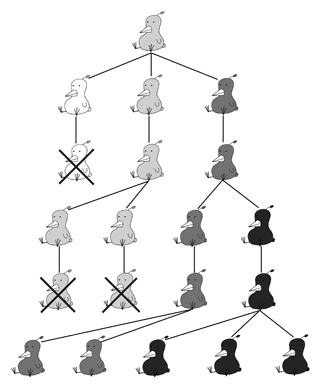 When an offspring’s DNA mutates during the process of cell replication or from external sources such as radiation – that mutation may or may not be passed down to further generations. Genetic mutations can be easily observed in humans, natural selection is not. We have the ability to prolong our own lives and help those who are in need. With natural selection, those who are best suited to their environment have a greater chance of survival but with humans, we don’t generally see the weaker members of our species die off before they have a chance to breed – some will but others won’t due to our ability to offer help to those who are dependent on others for survival.
When an offspring’s DNA mutates during the process of cell replication or from external sources such as radiation – that mutation may or may not be passed down to further generations. Genetic mutations can be easily observed in humans, natural selection is not. We have the ability to prolong our own lives and help those who are in need. With natural selection, those who are best suited to their environment have a greater chance of survival but with humans, we don’t generally see the weaker members of our species die off before they have a chance to breed – some will but others won’t due to our ability to offer help to those who are dependent on others for survival.
Evolution is further driven by our events such as gene flow and genetic drift.
Gene flow or known as migration, involves the genetic mixing of organisms, this leads to an increased genetic diversity in a population. As people mate with others who have migrated into the area, the gene pool grows and changes, leading to genetic diversity and creating more and more variation in traits.
Genetic drift is the process by which random events affect the ratio of genes in a population. For example: If you have a garden of lovely multi-coloured flowers, but a squirrel comes through and happens to wipe out nearly all your red flowers, by chance, then the frequency of red genes in your population of flowers will be much lower, and not many offspring will inherit red flowers. This process tends to reduce genetic diversity in a population (source).
Some people are resistant to the idea of evolution. Some people may concede that micro-evolution exists – small changes in a species due to things like gene mutations, natural selection, gene flow and genetic drift. Macro-evolution is change above the species level which can include major changes that can lead to a new species. Macro-evolution is the result of many species micro-evolutions. Instead of focusing on Homo Sapiens as a species, a macro-evolutionary lens will require that we zoom out on the tree of life and look at primates as a whole.
If we look at the biological classification of humans:
Macro-evolution refers to change above the species level – from genus and above. Often enough genetic change to form a new species.
So when we look at evolution of humans (Homo Sapiens) as a whole, it’s easy to see how we share a common ancestor with different species and how we have evolved over generations due to micro-evolution (natural selection, gene flow, genetic drift) and gene mutations and macro-evolution.
Macro-evolution is the subfamily “Homininae” branching off into “Gorillini” and “Hominini” and then “Hominini‘ branching off into the Genus “Pan” and “Homo” due to further evolution over time “Homo” has evolved into “Homo sapiens” (and others in the Genus “Homo“) over many many years. If we look at the Homo sapiens family tree – we can see how we link to other species within the Genus “Homo“.
So no, we didn’t “come from monkeys” we share a common ancestor and we have evolved alongside great apes.
If you like some of the things I say – I now have a Facebook page! Feel free to like my page by clicking here
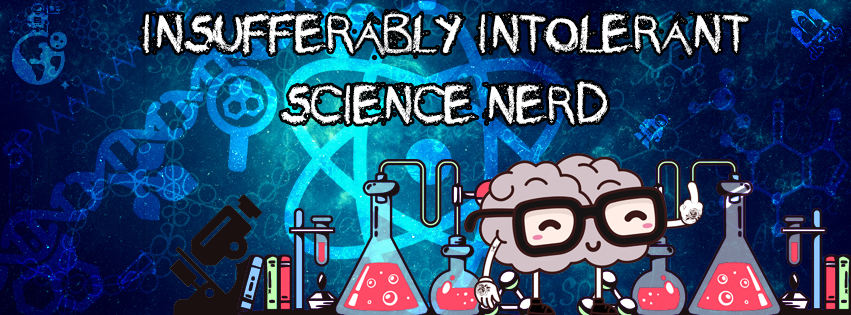
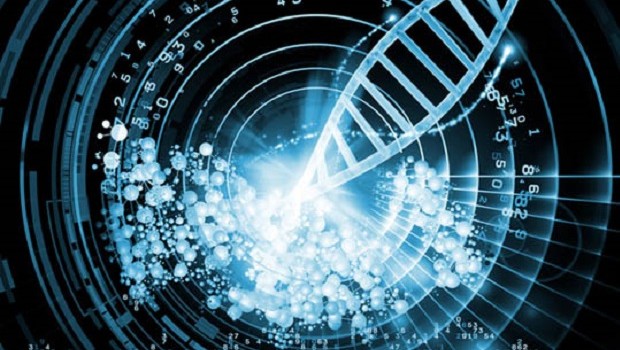
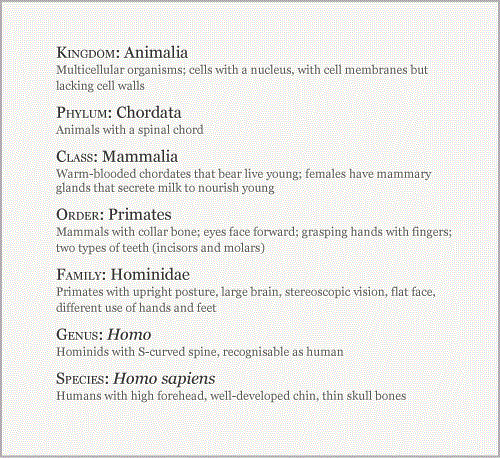
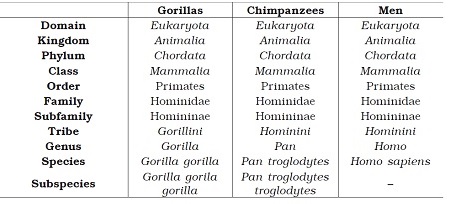
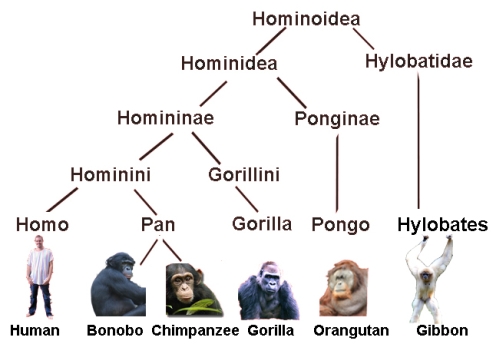

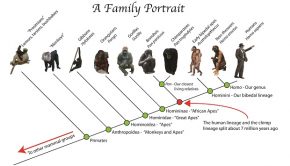
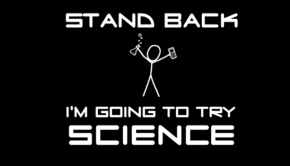
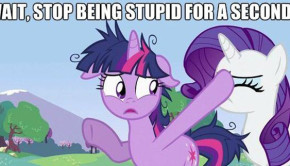
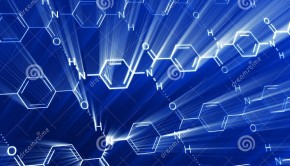
A rather dumbed-down, archaic view of evolution, better suited for early-20th-century textbooks than a 21st-century website.
Pingback: » Questions Atheists can answer, Christians just ignore them